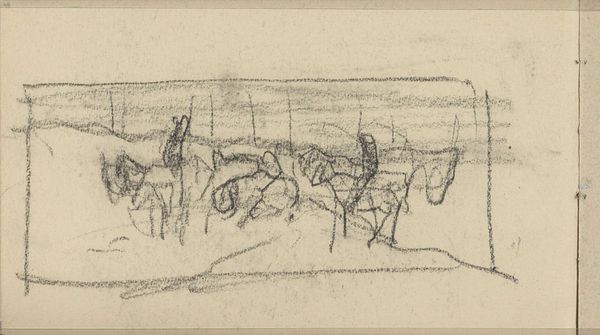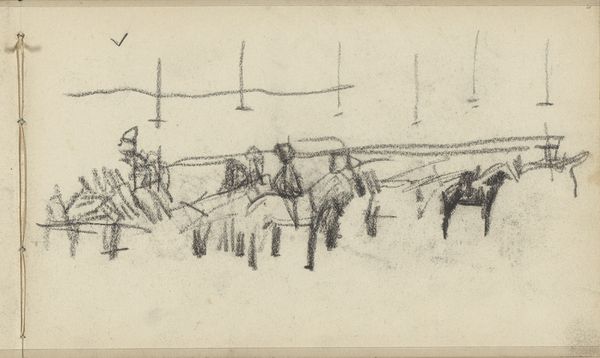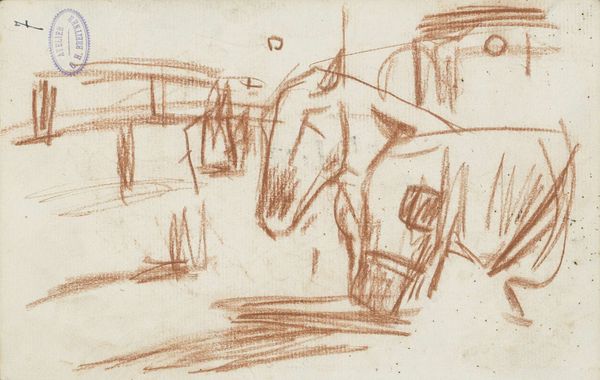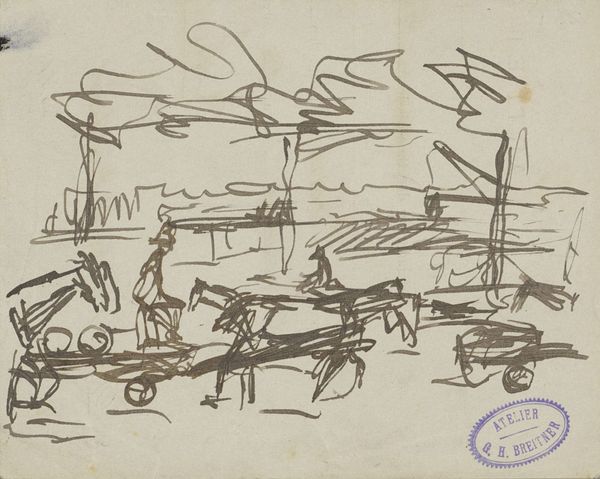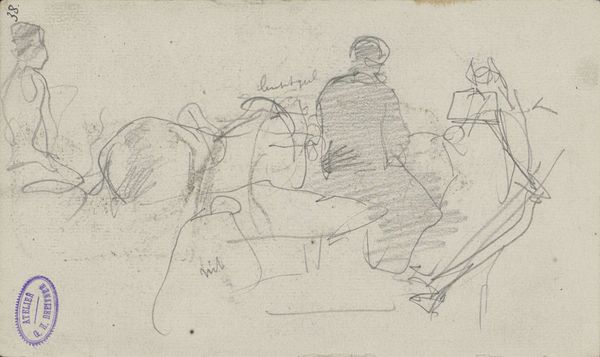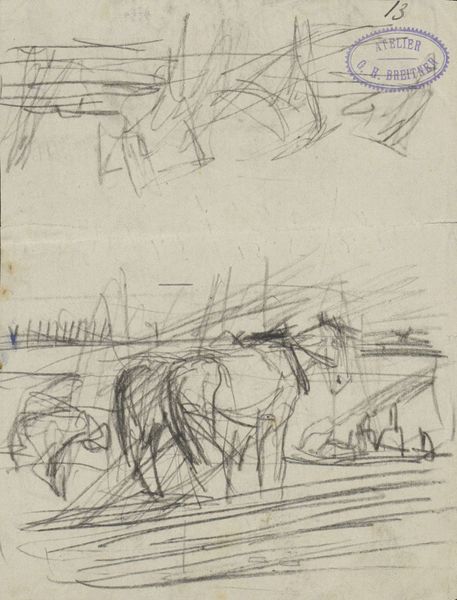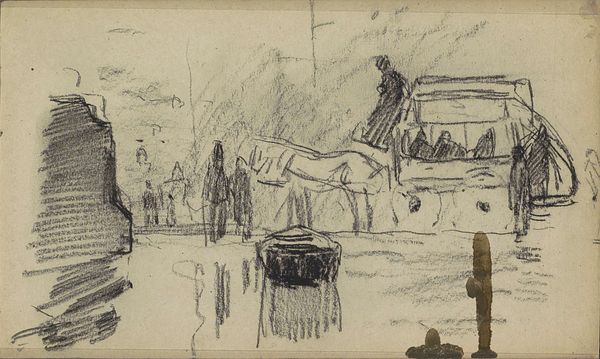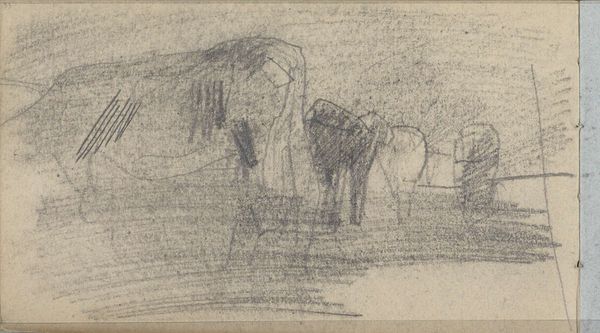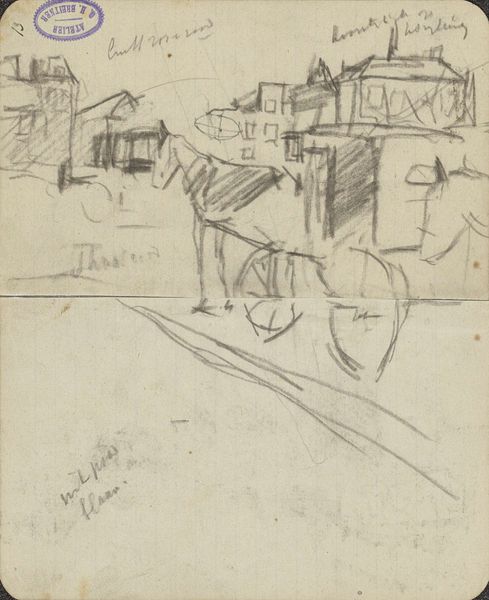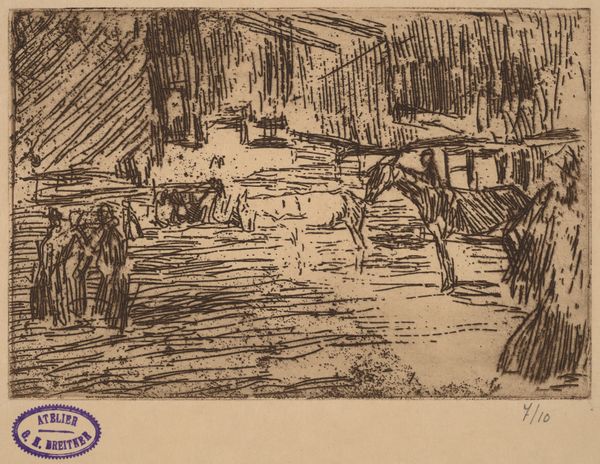
Dimensions: height 81 mm, width 154 mm
Copyright: Rijks Museum: Open Domain
Editor: We're looking at "Paardentrams in Amsterdam," a pencil drawing by George Hendrik Breitner, made sometime between 1904 and 1923. It's a very loose sketch, almost like a fleeting impression captured on paper. What do you see in this work that might not be immediately obvious? Curator: What I see is a society in transition. Breitner, often dubbed the 'painter of the people', wasn't just capturing a scene, but documenting the shift from animal power to modern transport, hinting at deeper socio-economic changes. This sketch isn't simply about horse-drawn trams; it's a snapshot of a specific historical moment. How do you think class plays a role in this narrative? Editor: That's interesting! I hadn't considered the social commentary aspect so directly. I guess I assumed it was purely observational. Is there something about the artistic style that emphasizes this perspective? Curator: Absolutely. Breitner's impressionistic style, characterized here by quick, gestural lines, suggests an interest in the everyday experiences of ordinary people. His commitment to depicting the working class in Amsterdam challenged the art establishment's focus on the elite, making his work inherently political. This "unfinished" look invites us, the viewers, to piece the story together. Who do you think had access to horse-drawn transport at this moment in history? Editor: Presumably, it was primarily those with a certain degree of wealth or those employed by the tram companies. This sketch hints at who has mobility, and who perhaps, does not. The fact that these figures are not embellished indicates the scene is not tailored to flatter any social group, but capture one. Curator: Precisely! This work encourages us to reflect on how social hierarchies were literally being mapped onto the streets of Amsterdam. Seeing his art this way encourages viewers to ask, "How do inequalities get encoded into our infrastructure even now?" Editor: So, beyond its aesthetic appeal, this sketch serves as a reminder to critically examine the relationship between art, society, and the silent power structures shaping our lives. It encourages us to engage actively in interpreting the narratives embedded in seemingly mundane scenes. Curator: Indeed. It pushes us to remember that art isn’t created in a vacuum, but rather reflects and shapes the world around us. Breitner's Amsterdam isn't just a place; it's a statement.
Comments
No comments
Be the first to comment and join the conversation on the ultimate creative platform.
